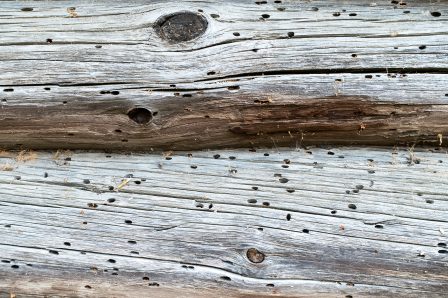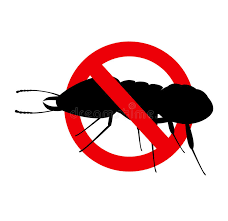Believe it or not, log cabins are not a buffet for termites as some people mistakenly assume. You see a lot of wood and think that log cabins would be a paradise for termites. That is not true. Log cabins are no more susceptible than stick frame homes to termite infestation.
Log Cabins and Termites

So, What Attracts Termites?
Termites are attracted to moisture. They feed on cellulose, which is an essential component of wood. It is proven that controlling the moisture content of logs controls the insects that attack the wood for food.
The Good News
There is good news if termites attack your log cabin. Their assault is almost immediately evident. Unlike stick-frame houses, where it could take years for you to realize that your house has a termite infestation. Since logs are not hidden behind layers of drywall, it’s much more evident if there is a termite problem. Typically, termites start on the outside of a log structure and work their way in, leaving an obvious trail of sawdust.
Termite Prevention
Even though log cabins tend to be more termite resistant than stick frame homes, you still don’t want to create an inviting environment for them on your property. These suggestions from the National Pest Management Association will make your property less appealing to termites and other pests:
- Keep landscaping such as shrubbery and tree branches trimmed and away from the exterior log walls.
- Remove tree stumps which are a good source of food for termites.
- Eliminate or reduce moisture in and around the cabin, which termites need to thrive.
- Leave a gap between mulch (mostly wood chippings) and your foundation. Or use pine needles, pea gravel or rubber mulch – none of which appeal to termites!
- Repair leaking faucets, water pipes and exterior AC units.
- Repair rotted roof shingles (not an issue with metal roofs which are standard on Conestoga Log Cabins).
- Replace weather stripping and loose mortar around basement foundation and windows.
- Make sure sprinklers and irrigation systems are not causing accumulations of water.
- Divert water away from the cabin through properly functioning downspouts, gutters and splash blocks.
- Monitor all exterior areas of wood, including windows, door frames and skirting boards for any noticeable changes.
- Store firewood at least 20 feet away from the cabin.

How Conestoga’s Everlast™Log Repels Termites
As a matter of fact, the logs that Conestoga Log Cabins uses are especially effective at repelling termites. Conestoga’s Everlast™ Logs are kiln-dried below the 19% fungi threshold, which reduces the initial moisture content present in the wood. Because of how dry our logs are, they’re also resistant to rot, which attracts those nasty termites. This minimal moisture content makes Conestoga’s Everlast™ logs more naturally termite resistant than traditional lumber. As far as we know, a Conestoga Log Cabin has never had a termite problem.
If you’re concerned about log cabins and termites, hopefully reading this helped to put your mind at ease! If you have a log cabin, you can rest assured that termites are not going to make a feast out of your home.
